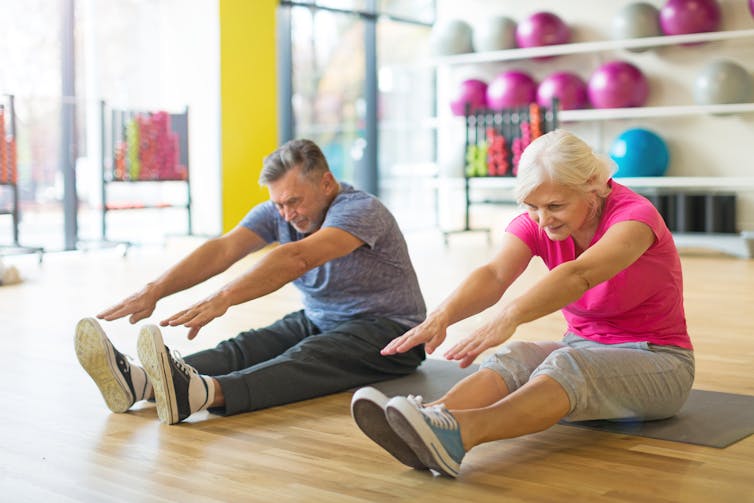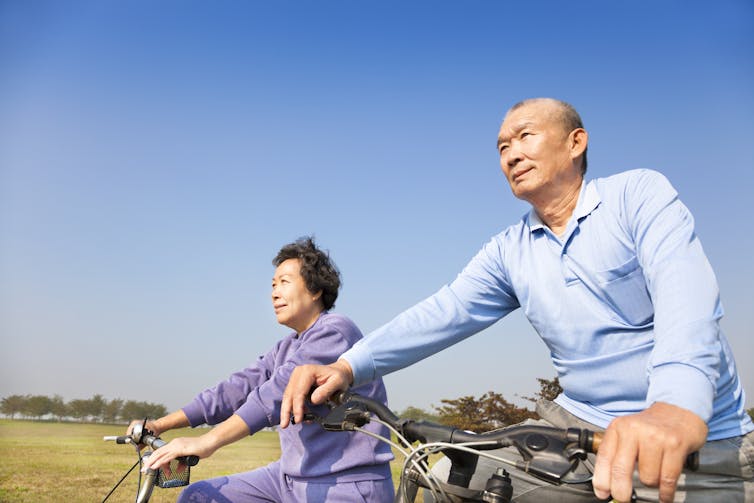Can exercise help tackle the opioid crisis?
/Can exercise help tackle the opioid crisis?

U.S. President Donald Trump is calling for high-intensity drug traffickers to face the death penalty in the United States as part of a new plan to tackle the opioid epidemic.
The misuse of opioids has reached crisis levels across North America. Every day in 2016, 116 Americans died from opioid-related drug overdoses. And almost 1,500 Canadians died from such overdoses during the first half of 2017.
Meanwhile, health-care providers continue to prescribe opioids — to try to help people suffering from chronic pain.
Prescription of low-dose opioids over the medium-term may be a useful pain management strategy. Nearly one in five adults live with chronic pain in Canada, and the rates are higher among older adults and women. However, uncertainties about the long-term effectiveness of opioids, along with addiction, tolerance and dependency risks, mean that other pain management strategies are urgently needed.
Exercise is one such strategy. Exercise is recommended as an effective non-opioid strategy for non-cancer pain such as fibromyalgia and chronic low back pain. Yet most adults living with chronic pain do not exercise. Or they exercise very little.
As former collegiate athletes, we have experienced chronic pain ourselves. Now, as researchers, we study the psychological factors that may help people with chronic pain exercise daily.
We have found three factors — acceptance of pain, resiliency and the confidence to cope — boost exercise participation for those living with chronic pain.
Exercise reduces pain intensity
Pain is considered to be chronic when lasting beyond an expected time for tissue healing, usually three to six months or longer, and it is not due to cancer.
Chronic pain arises from various causes such as an underlying chronic disease like arthritis, an injury or a hypersensitive nervous system. The origin of the pain can also be unknown.
There are no specific exercise recommendations for adults living with chronic pain. However, we know that 150 minutes of moderate to vigorous intensity exercise each week provides health benefits to all people.
You know that exercise is of moderate intensity if you can talk but not sing. At vigorous intensity, most people can say only a few words at a time because they are breathing too hard.
For individuals with chronic pain who are just beginning to exercise, low- intensity activity can also be helpful.
Overall, exercise helps people better manage chronic pain and its impacts. For example, exercise reduces how intense pain feels. Exercise also reduces disability, fatigue, depression and anxiety, all of which are commonly experienced by those living with pain. Those who exercise are better able to do physical tasks and have better overall fitness levels.
Despite the many benefits, participating in exercise is challenging. Researchers have found that women with chronic widespread pain participated in only nine minutes of moderate to vigorous intensity exercise on weekdays and 12 minutes on weekends.
Men with chronic widespread pain did not exercise much more. They participated in 20 minutes on weekdays and 17 minutes on weekends.
Acceptance of pain is key
Early in our own research, we expected pain intensity to be the main barrier to participation in exercise. However, research shows this is typically not true.
In an early key study, researchers found that individuals’ pain intensity was no higher on non-exercise days compared to exercise days. They suggested that study participants’ pain may not have been intense enough to interfere with exercise.
To examine this possibility, we studied adults who were having a flare in their usual pain from arthritis. Even in this situation, pain intensity was not associated with exercise participation.
Read more: Solutions to Canada’s opioid crisis
How people think about their pain seems to be much more important than the intensity of the pain.
One example is acceptance of pain. Acceptance happens when people give up the struggle to completely control their pain and are willing to live a satisfying life by engaging in valued activities, like exercise.
We found that adults reporting greater acceptance of their chronic pain from arthritis also participated in higher levels of moderate to vigorous intensity exercise compared to those with lower acceptance.
In fact, individuals with higher acceptance exercised for over 200 minutes in a week — well above the health-promoting duration of 150 minutes each week.
Resiliency and confidence
Recently, we also examined resiliency and how it related to whether people with chronic pain exercised or not.
Resiliency is an individual’s ability to adapt well to difficult situations and sources of stress, such as a health challenge like chronic pain.

In preliminary work with one of our graduate students, Miranda Cary, we found that people who are more resilient exercised more at moderate to vigorous intensities. They also had fewer symptoms of depression and less anxiety about their pain.
Another psychological factor important for exercise participation is the confidence to cope with pain and related barriers, like fatigue and stiffness.
We have found that the more confidence individuals have that they can use strategies to cope, the higher their exercise levels.
More confident individuals also persist longer and harder in using coping strategies when faced with challenging barriers compared to less confident individuals.
Mindfulness as a strategy
How can these psychological factors (pain acceptance, resiliency, confidence to cope) be improved among individuals living with chronic pain?
Working with a registered psychologist who has expertise in acceptance and commitment therapy and/or resiliency is a good starting point.
Practising mindfulness, or being present in the moment, may also be helpful. Many mindfulness apps are available for use on smart phones and tablets.
Building confidence to cope with pain and related barriers takes planning and practice. A good starting point to identify effective strategies is to use the 4 P’s of Pain Management Tool developed by Dr. Susan Tupper at the Saskatchewan Health Authority.
The 4 P’s include the strategies of: Physical (e.g. acupuncture, ice/heat), psychological (e.g., mindfulness, relaxation), pharmacological (e.g. non-steroidal anti-inflammatories) and prevention (e.g. activity pacing).
Other strategies can be identified via brainstorming with others who have chronic pain, as well as health-care and exercise providers, and using online search engines. Once people try using strategies, and figure out which ones work, this builds their confidence and exercise levels.
![]() Ultimately, exercise helps individuals better manage their chronic pain. However, exercising is not as easy as “just do it.” Psychological strengths must be nurtured within individuals to help them start and stick with exercise.
Ultimately, exercise helps individuals better manage their chronic pain. However, exercising is not as easy as “just do it.” Psychological strengths must be nurtured within individuals to help them start and stick with exercise.
Nancy Gyurcsik, Professor of Exercise Psychology, University of Saskatchewan and Danielle Brittain, Associate Professor at Colorado School of Public Health, University of Colorado
This article was originally published on The Conversation. Read the original article.

